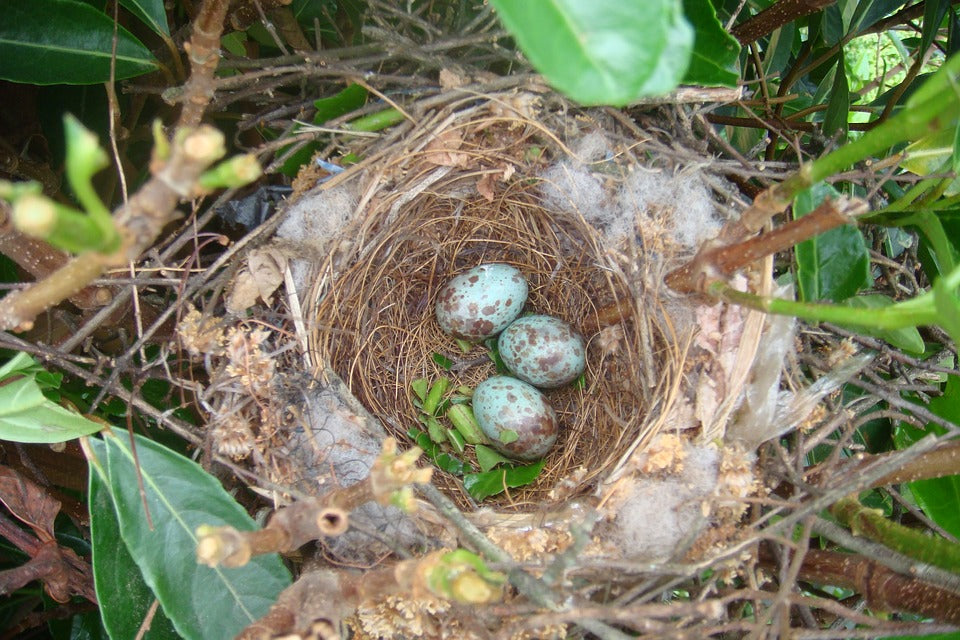Offer
Provide additional details about the offer you're running.
Provide additional details about the offer you're running.
Provide additional details about the offer you're running.

Well now is as good a time as ever to spot nests already built or to keep an eye out for those that might still be under construction. As we roll into the month of May, we should begin to see many new nests pop up, and eventually, eggs!
We are often sent pictures from customers and friends of nests they have stumbled upon out in the field or right in their backyard, asking what kind of bird they belong to. While this might not be able to cover every variation of nest and eggs out there, these tips should help you get a little closer to identifying the species yourself.
Surveillance
This is perhaps the easiest way to go about identifying who built that nest in your yard. Setting up in a hidden location or from inside your home with a pair of binoculars or other optics can give you the opportunity to spot the female bird as she visits the nest. Be mindful that females of certain species can be very tricky to identify. Keep a notebook handy in the event you need to jot down a few descriptive points about the bird and then check your trusty field guide later on.
Location
Where the nest is built can, in some cases be a dead giveaway. There are a wide variety of bird nest designs out there and knowing what kind of birds utilize a cupped, cavity, burrow or platform nest can be the first hint leading you to identification.
Eggs
If you are fortunate enough to find a nest with eggs in it, or any nest for that matter, do not touch it. You can, however, take a quick peek inside or use your camera to snap a picture and promptly move away from the nest.
You will want to note the size, colour, shape, and number of eggs in the nest. The size of the egg will usually denote the size of the bird – bird birds have big eggs, little birds have little eggs. When it comes to the markings and colouring of eggs, they should be denoted, but not heavily weighted as they can be highly variable, even within a clutch. The shape of the eggs can, in some cases be related to the environment of the nest, seabird eggs, for example, are often pointed on one end, not allowing the eggs to roll out of a ground nest.
The number of eggs can also help you determine the species as there are a number of species, such as hummingbirds, that have consistent clutch sizes each and every year.
High Quality Blend